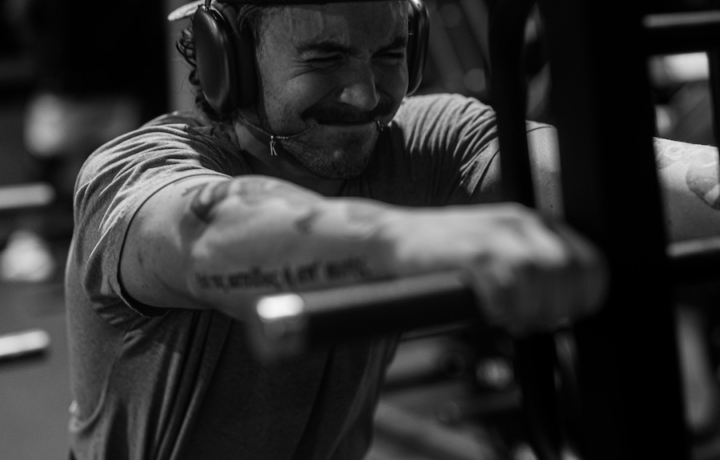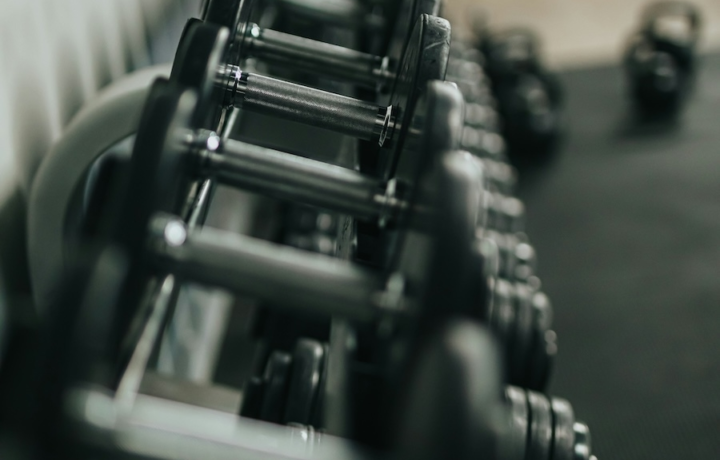Exercise
Rear Lateral Raise

Rear Lateral Raise
How to Perform
- Stand with feet shoulder-width apart, holding a dumbbell in each hand with palms facing your body and arms hanging straight down.
- Maintain a slight bend in your knees and hinge forward at the hips until your torso is nearly parallel to the floor, keeping your back flat and core engaged.
- Allow your arms to hang perpendicular to the floor with a slight bend in the elbows that remains constant throughout the movement.
- Exhale as you raise both arms out to the sides, focusing on squeezing your shoulder blades together.
- Lift the weights until your arms are approximately parallel to the floor, ensuring your elbows remain slightly higher than your wrists at the top of the movement.
- Pause briefly at the top position, focusing on the contraction in your rear deltoids and maintaining a neutral neck position.
- Inhale as you slowly lower the weights back to the starting position with controlled movement, maintaining tension in your shoulder muscles.
- Keep your torso position stable throughout the entire exercise, avoiding any swinging or using momentum to lift the weights.
Important information
- Keep the weight light enough to maintain proper form – this is an isolation exercise where technique matters more than heavy weight.
- Make sure your wrists stay neutral (not flexed or extended) throughout the entire movement to prevent strain.
- If you experience shoulder pain, try rotating your hands slightly so your thumbs point up at the top of the movement.
- Avoid shrugging your shoulders toward your ears – think about pressing your shoulder blades down and back.

Rear Lateral Raise
Exercise Details
Primary Muscles
Muscle Groups
Mechanic
Risk Areas
Built for progress
Take the guesswork out of training
Create personalized AI-powered workout plans that evolve with you. Train smarter, track every rep and keep moving forward, one workout at a time.






The Rear Lateral Raise stands as one of the most effective isolation exercises for developing well-defined posterior deltoids, which are often neglected in many training routines. This intermediate-level movement primarily targets the rear delts while also engaging the side delts as secondary muscles, making it invaluable for anyone pursuing comprehensive shoulder development. In bodybuilding circles, the Rear Lateral Raise has earned its reputation as a sculpting powerhouse. The exercise creates that coveted 3D shoulder look by specifically targeting the posterior aspect of the deltoid muscle, which contributes significantly to the appearance of shoulder width and definition when viewed from multiple angles. This detail-oriented focus explains why it's a staple in the training regimens of competitive bodybuilders during both bulking and cutting phases. Beyond aesthetic benefits, incorporating Rear Lateral Raises regularly enhances shoulder strength in a balanced manner.
This balanced development is crucial not only for physical symmetry but also for maintaining healthy shoulder mechanics and reducing injury risk. The strength gains from this exercise transfer effectively to pressing movements by creating more stable shoulder joints capable of handling heavier loads. What makes the Rear Lateral Raise particularly valuable is its versatility. Whether performed with dumbbells, cables, resistance bands, or even weight plates, the movement pattern effectively isolates and challenges the target muscles. This adaptability allows for consistent training stimulus regardless of available equipment, making it accessible across various training environments.
For optimal results, many experienced lifters incorporate this exercise toward the middle or end of shoulder workouts when pre-exhaustion of the larger deltoid heads has occurred. This strategic placement ensures the often-stubborn rear delts receive adequate stimulation for growth. Progressive overload remains important, though maintaining strict form typically takes precedence over handling excessively heavy weights with this movement.
FAQ - Rear Lateral Raise
Rear Lateral Raises primarily target the posterior deltoids (rear shoulder muscles) while also engaging the middle deltoids, rhomboids, and trapezius as secondary muscles. This focused activation is what makes the exercise so effective for developing the often-neglected back portion of the shoulders.
Maintain a slight bend in your elbows throughout the movement, hinge forward at the hips (30-45 degrees), and lift the weights out to the sides rather than behind you. Focus on squeezing your rear delts at the top of the movement, and avoid using momentum or swinging the weights up.
Use lighter weights that allow you to perform 10-15 controlled repetitions with proper form. This is an isolation exercise where strict technique and muscle connection matter more than heavy weight—most lifters benefit from 5-15 pound dumbbells depending on experience level.
Incorporate Rear Lateral Raises 1-2 times weekly as part of your shoulder or upper body training days. Since rear delts are often underdeveloped and recover relatively quickly, some advanced lifters benefit from training them up to 3 times weekly with appropriate volume management.
For home workouts, try bent-over resistance band pulls, water bottle or household item raises, or seated rear raises using a bench or stability ball. You can also perform face pulls with bands as an effective alternative that targets similar muscle groups while requiring minimal equipment.







